Over the years I have taken many photos of the southwest corner of the auto tour route at Bear River Migratory Bird Refuge in northern Utah. I started taking the photos because the view was scenic, included the distant Promontory Mountains on clear days, and because the light was always wonderful there on bright sunny days which have shown the wetlands off in a beautiful way. Most years.
This is a long post.
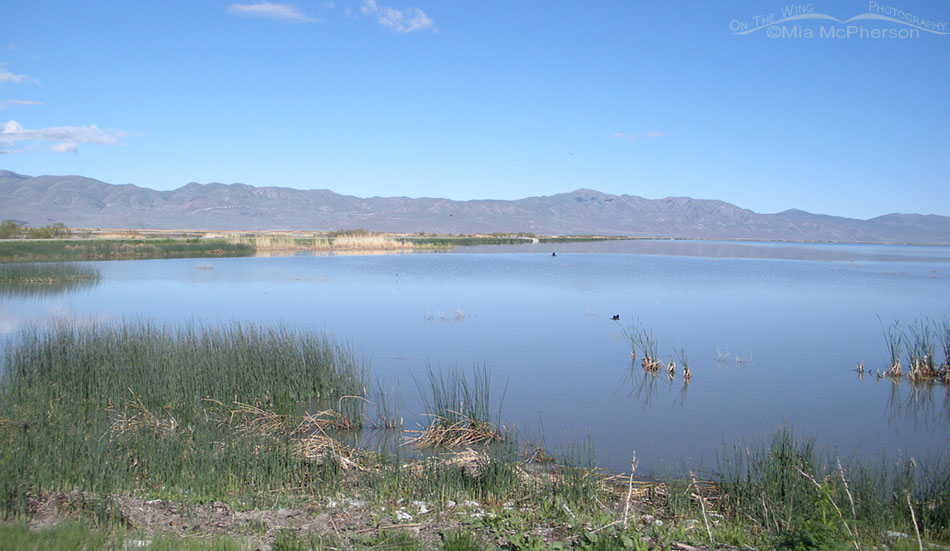
Southwest corner of the auto tour route at Bear River MBR – May 30, 2010
The photo above shows a Yellow-headed Blackbird in flight by a small stand of cattails and along the shore there are rushes, grasses and other vegetation.
This photo, taken in 2010, shows this unit of water had very few phragmites.
What exactly are phragmites?
Non-native Phragmites are introduced perennial, aggressive wetland grasses that outcompete native plants and displace native birds and animals. In the early 19th century non-native phragmites were first found near coastal ports in the eastern U.S. and they have spread rapidly across the country. For more information see this fact sheet.
Phragmites are a very real, serious problem all over the Bear River Migratory Bird Refuge.
My purpose for this post is to show images of this same southwest corner of the auto tour route at the refuge over the years.
Why?
To show the changes I have seen at this one corner of the Bear River Migratory Bird Refuge since the year after I moved to northern Utah.
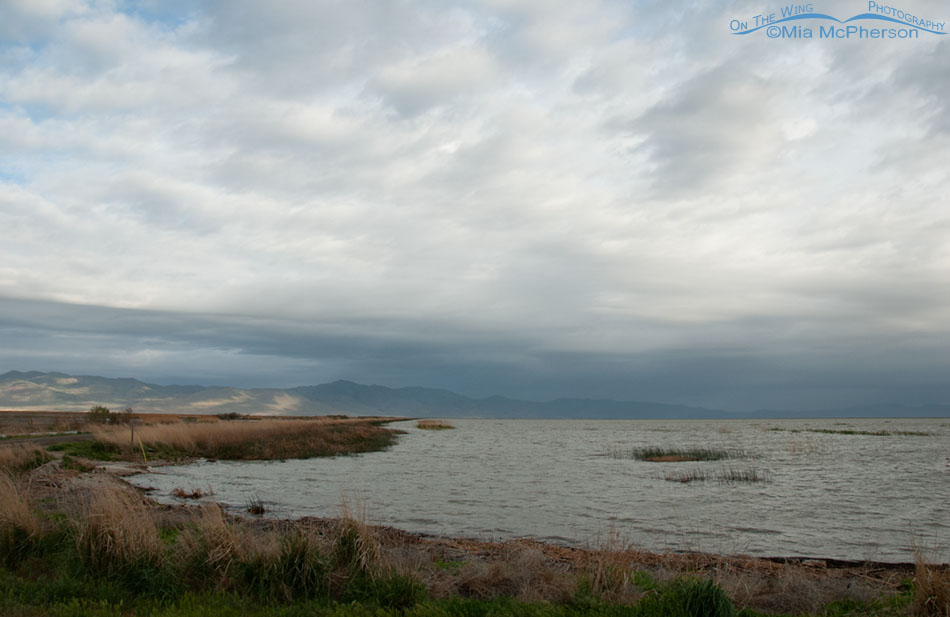
Southwest corner of the auto tour route at Bear River MBR – May 4, 2012
Open water is crucial at the refuge for migratory birds so that they have a place to land, feed, and rest safely away from predators. During the spring shorebirds migrate into the refuge where some refuel and then head farther north to breed while others begin the nesting season in this desert oasis.
This image, taken in 2012 shows plenty of open water, grasses along the shore and some native cattails and rushes in the water. I believe that between the top image taken in 2010 and this one there had been a controlled burn in this section of the refuge but unless I go through all of my images I can’t swear to that but in 2010 there were more rushes on the shoreline of this corner of the auto tour route.
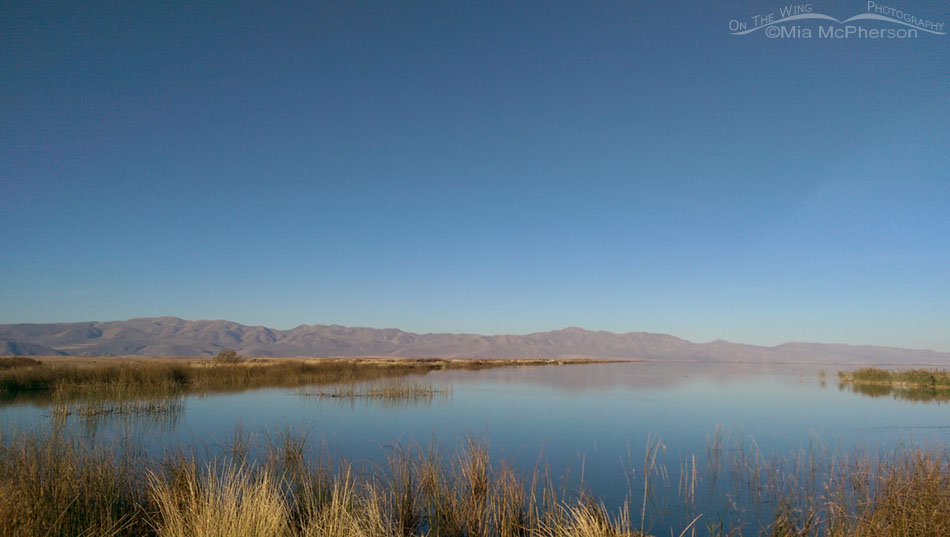
Southwest corner of the auto tour route at Bear River MBR – November 15, 2013
In the fall after most of the shorebirds have flown south migratory waterbirds fly into the refuge. Tundra Swans by the thousands arrive from their breeding grounds on the tundra of Alaska and Canada and many species of ducks arrive. Most of these waterbirds stay at the refuge until the water ices over to feed, rest, and fill the wetlands with their calls.
This photo of the southwest corner taken in the fall 2013 shows some sparse stands of phragmites on the left side and larger, thicker clumps out in the water on the edge of the right side of the frame. There was still plenty of open water plus native rushes and grasses at the shoreline at the front of the image.
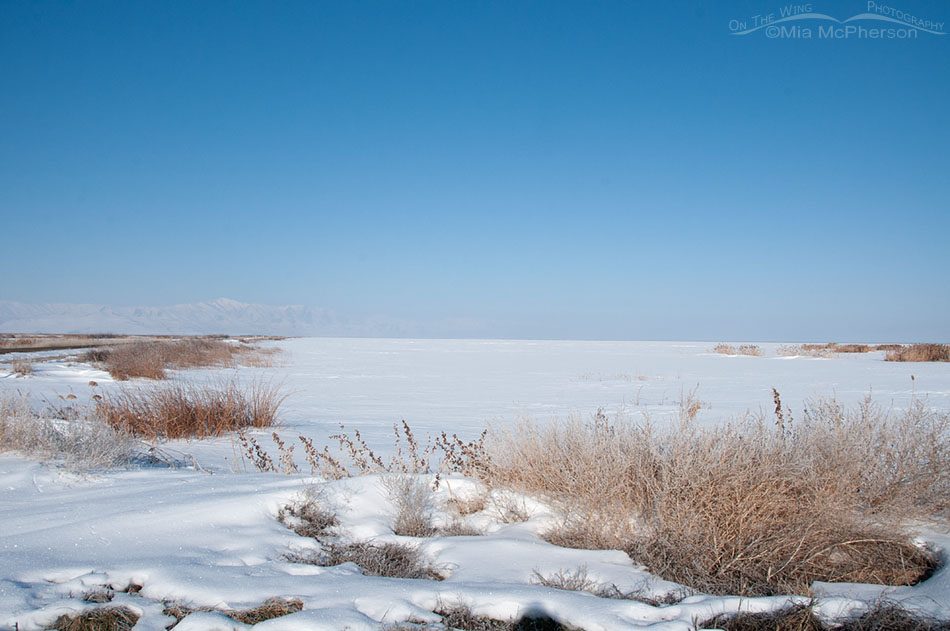
Southwest corner of the auto tour route at Bear River MBR – February 9, 2016
Deep winter can be quieter for birds at the refuge but even with the snow and the cold the open areas of water provide areas for wading birds, Bald eagles, gulls, ducks, and other birds to find food. The snow covered ice provides resting areas for them as well.
The larger, thicker clumps of phragmites are plainly visible at the edge of the right side of this photo taken in 2016.
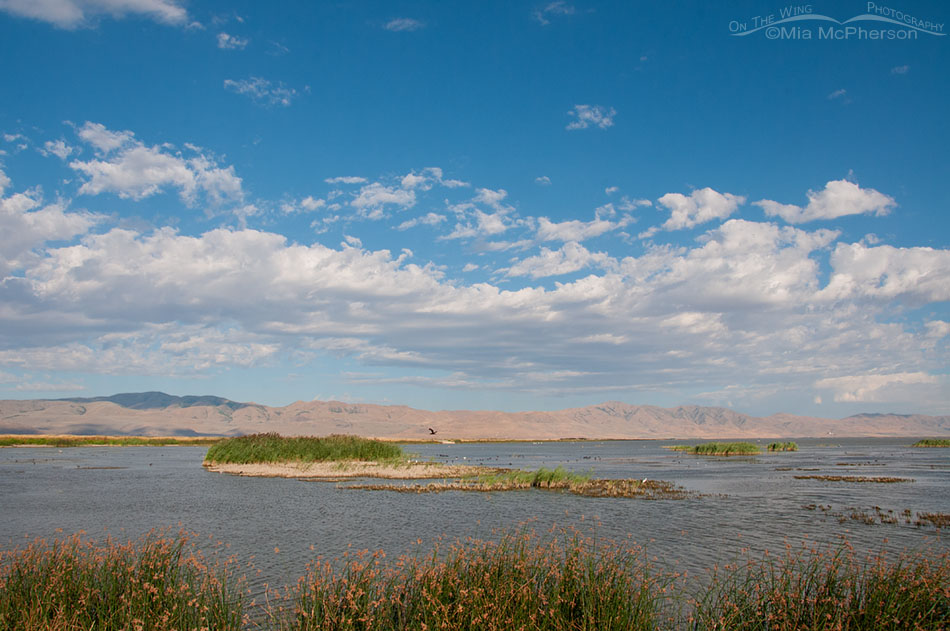
Southwest corner of the auto tour route at Bear River MBR – August 7, 2016
By the summer of 2016 the larger clumps of phragmites had formed thick mats at the southwest corner of the auto tour route. There was still plenty of open water for coots, grebes, gulls, terns, and ducks to land on and to find food. Wading birds searched for prey from the edges of the mats of phrags.
There were healthy stands of rushes on the shoreline in 2016 as this photo clearly shows.
This corner of the auto tour route was spectacular for photographing Tundra Swans in the late fall and early spring. The swans slept in the open water safe from predators. To see them lifting off to head out to feed in the early morning was inspiring and their trumpeting calls soothed me.
During the spring and summer shorebirds, American Pelicans and Pied-billed, Clark’s and Western Grebes were regularly seen feeding here as Caspian and Forester’s Terns, Ring-billed and Franklin’s Gulls dove down from the sky to snatch prey from the water. Virginia Rails, Soras, Great Blue and Black-crowned Night Herons as well as Snowy Egrets foraged on the shorelines. When fall arrived the ducks were seen here in large numbers and would blast off when people got out of their cars or when a Bald Eagle flew by.
It was very birdy for a large part of the year.
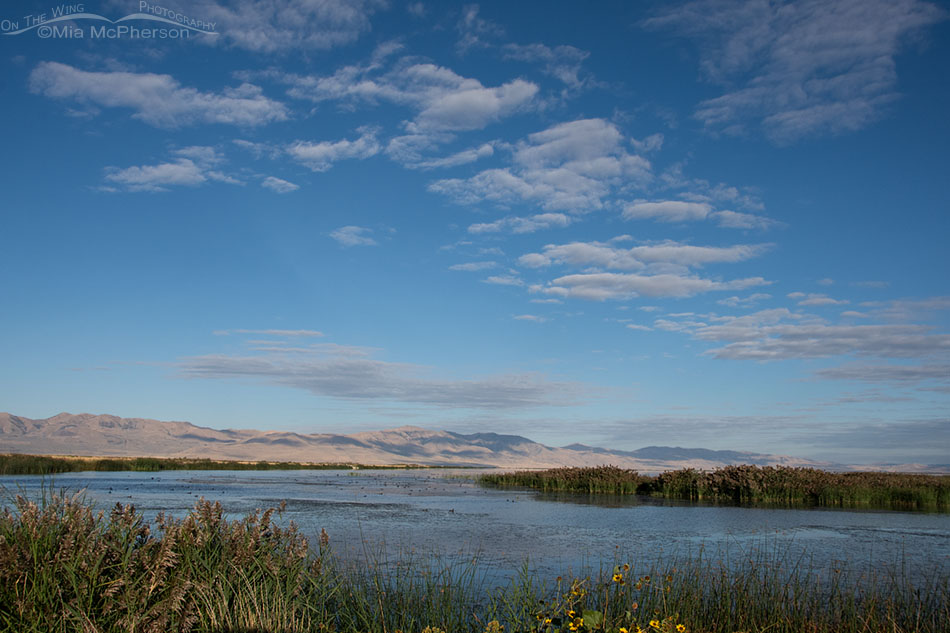
Southwest corner of the auto tour route at Bear River MBR – September 20, 2017
In the spring of 2017 the water was drained in Unit 2 for the purpose of replacing the water control structure for that unit of water. The soil needed to be dry for the construction of the new structure. By late summer I saw on Facebook that they were letting water back into the unit and had postponed the installation of the water control structure. The grebes and other birds that should have nested on Unit 2 didn’t nest that year.
When fall of 2017 arrived the larger clumps of phragmites out in the water had converged and were thick. Phragmites were starting to crowd out the rushes on the shoreline. There was open water for the birds and animals.
Another image from this September 20, 2017 series and the second one down below dated March 30, 2019 were used with my permission by the refuge for a planning document about phragmites growth.
During the spring or 2018 water levels were once again dropped so that the water control structure could be replaced. Once again the soil dried out and birds couldn’t nest on Unit 2. The water control structure was replaced but it was too late for the birds to nest by the time water was allowed back in.
In August of 2018 Unit 2 was dry.
Thick vegetation had grown on the exposed soils and I wrote about what I thought Bear River MBR might be like with less water flowing into it because of proposed dams on the Bear River. I created videos of what it looked like including one of the southwest corner of the auto tour route. In one of the videos I mention that cattle were on the refuge to help with phragmites mitigation and control. The cattle eat the phragmites and other native vegetation and deposit manure on the ground. Manure is fertilizer.
This is what is know about fertilizer and phragmites: Landowners can eliminate or reduce fertilizer (to control the spread of phragmites).
There was a controlled burn for phragmites mitigation on the refuge which included the southwest corner of the auto tour route during the fall of 2018.
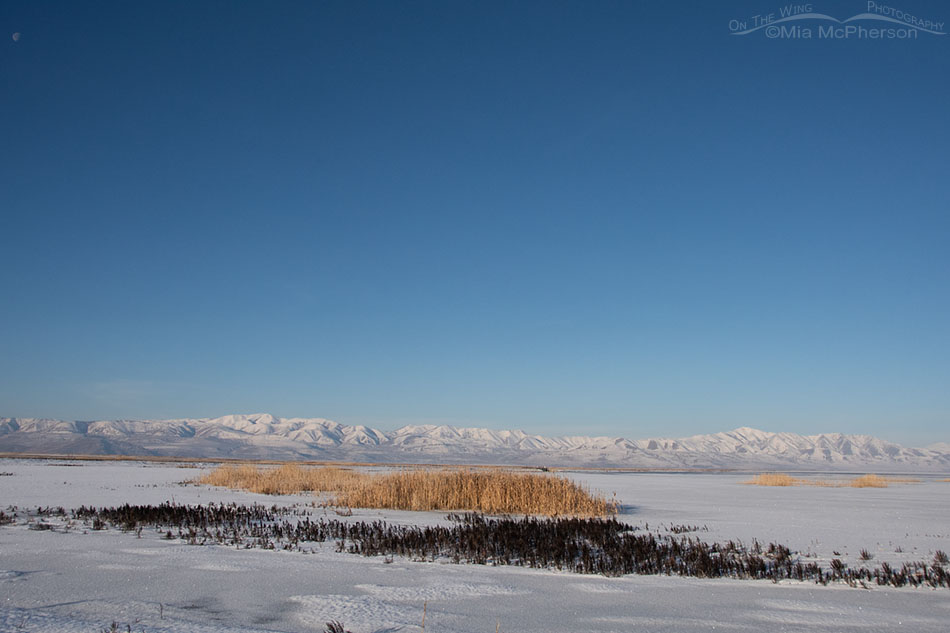
Southwest corner of the auto tour route at Bear River MBR – January 26, 2019
Winter snow can hide what it looked like beneath it at the southwest corner of the auto tour route on the refuge.
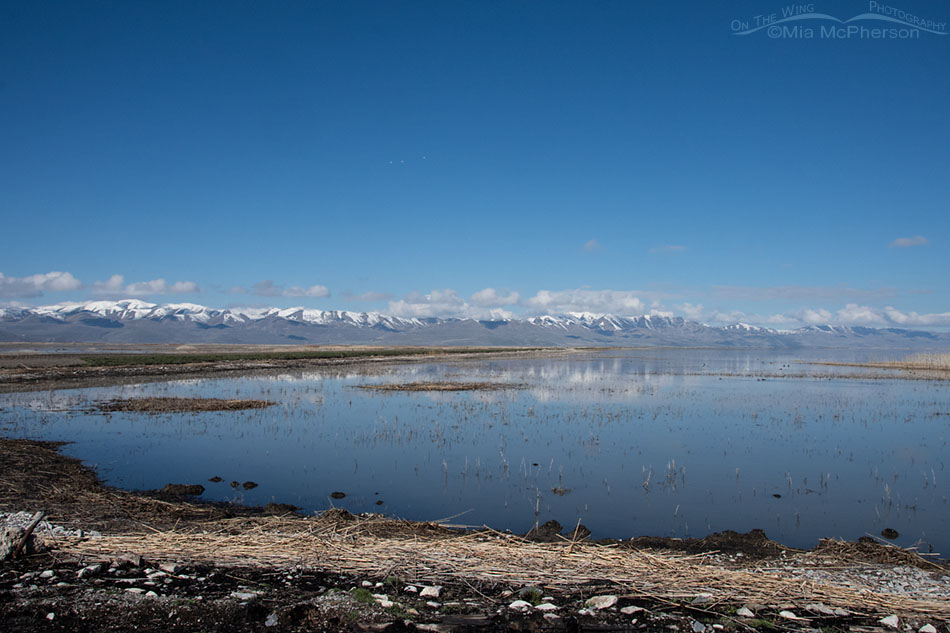
Southwest corner of the auto tour route at Bear River MBR – March 30, 2019
When spring of 2019 arrived this is what the corner looked like.
It was clear that the phragmites and native vegetation were burned down to the ground in 2018. Some of the larger clumps of phrags out in the water appeared almost untouched by the controlled burn the previous year.
For the third year in a row Unit 2 was drained for phragmites control through burning, spraying and, cattle grazing. Also for the third year in a row there were very few nesting grebes visible from the auto tour route. It was quiet.
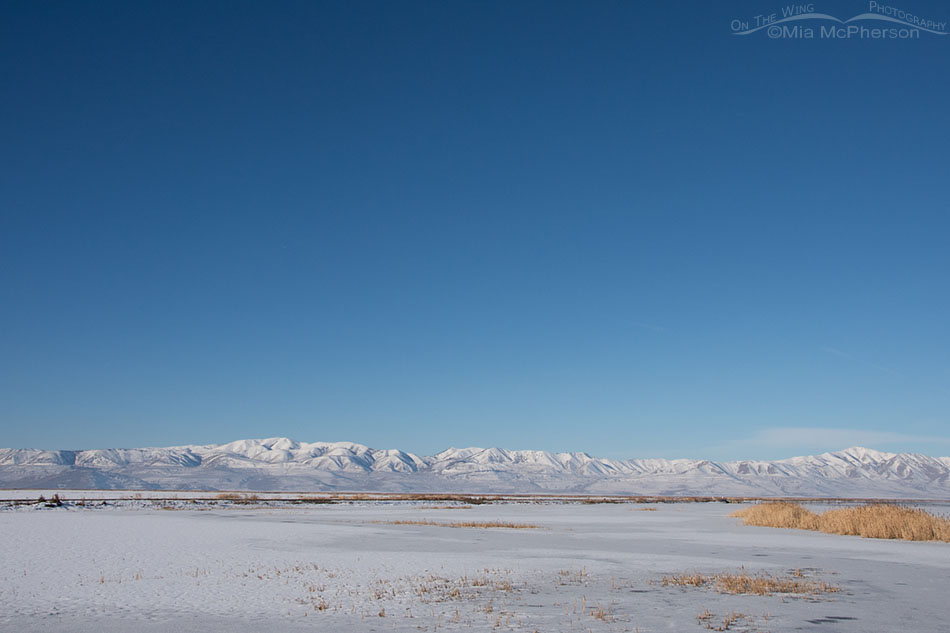
Southwest corner of the auto tour route at Bear River MBR – January 7, 2020
This photo shows the southwest corner of the auto tour route in January of 2020. The water level was low before it iced over.
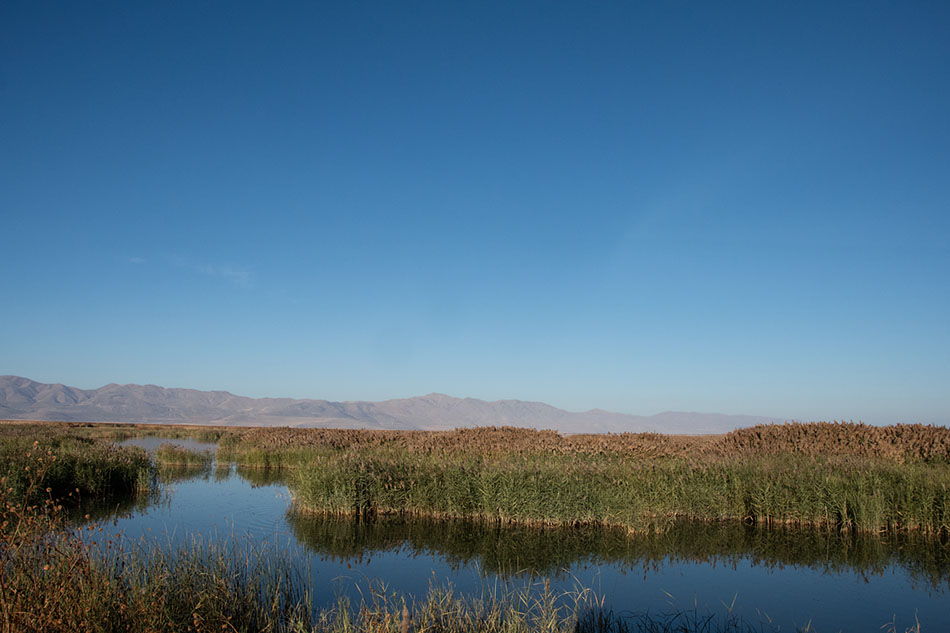
Southwest corner of the auto tour route at Bear River MBR – October 30, 2020
The year 2020 saw huge phragmites growth on the refuge and not just at the southwest corner of the auto tour route. This was after spraying, burning, and cattle grazing. After this unit being dry for three summers in a row. In this photo I can only see the road where the water comes to the narrowest point towards the left side of the image.
Only a few birds showed up on what was left of the open water. The phrags were thick in the water and along the shoreline. It was hardly worth stopping there to look for birds and the swans that used to be at this corner during the fall and early spring? Forget about that.
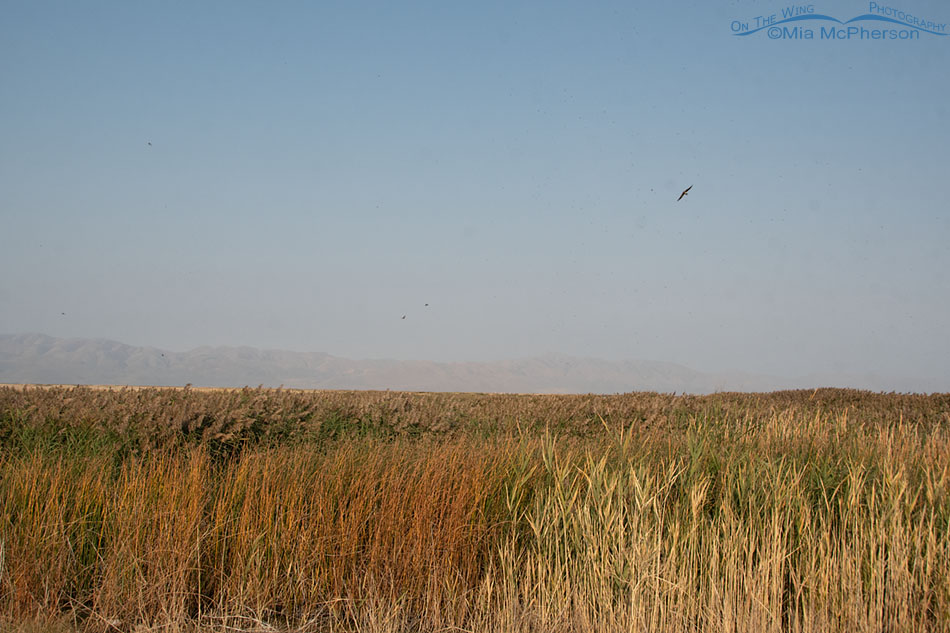
Southwest corner of the auto tour route at Bear River MBR – September 27, 2021
These last two photos were taken last week and they are part of the reason I was upset on my last trip up to the refuge. This is just one small corner of the twelve mile auto tour route and this small corner has seen a lot of phragmites mitigation over the twelve years I have lived in Utah. I couldn’t see the road from where I sat in my Jeep. The phrags are just that thick.
There are many other places on the refuge where the phrags are thicker now than they were even just three years ago. There are sections of the water canals where I can no longer see the water or even if there was water except for through a few gaps.
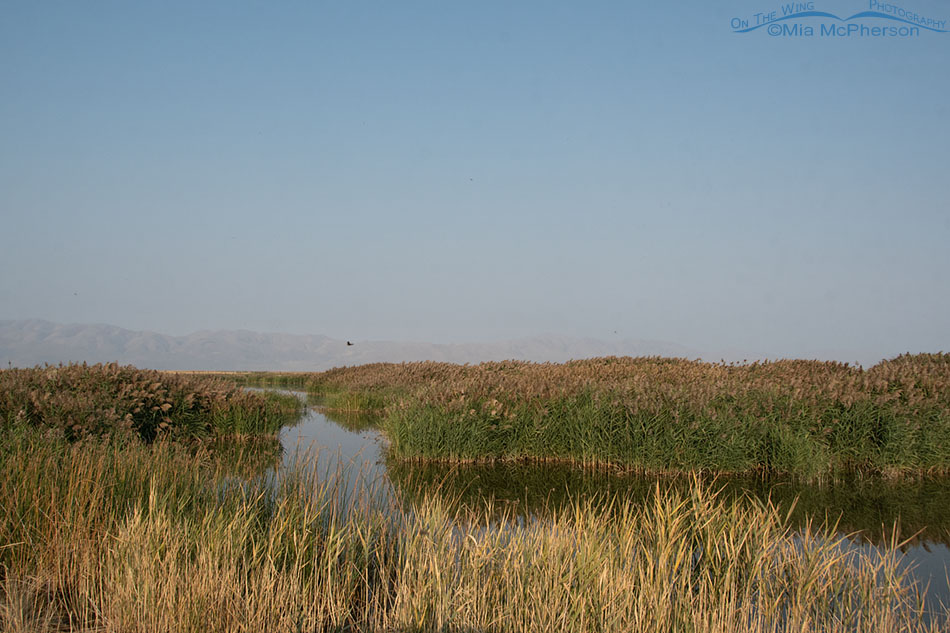
Southwest corner of the auto tour route at Bear River MBR – September 27, 2021
When I moved a bit I was able to see where the road should have been but the phrags still were in the way. I saw a few blackbirds flying over the water and that was it at this corner. No grebes, no coots, no wading birds, no gulls, terns, ducks, or pelicans.
I would say that all of the cattle grazing, aerial spraying, and burning hasn’t worked.
Phragmites fix or fail?
I think my photos through the years provide the answer.
There is no doubt that I love the refuge. I love it more when we can actually see the birds and wildlife.
Mia
P.S., I’m not pointing fingers, I am just relaying what I see in my photos.


Great post! We are having the same problem here in Denver at the RockyMountainArsenal. They’ve tried burning them and they just keep creeping back and obscuring more of the waterways. We used to be able to observe King Fishers feed and now we can’t see the water at all.
Fascinating and scary at the same time. I hope the folks at the Fish and Wildlife Service are taking this phrag “invasion” seriously and do whatever is necessary to restore the habitat to its natural state. Thanks for the heads-up Mia.
One of my favorite paths in the Wounded Wetlands near my south Florida home had been the trail on the levee along the canal. It is in a dedicated preserve whose owners are required to restore and maintain it in a natural condition. For the first few years the area was mowed at least twice a year, which encouraged a nice cover of short native grasses that attracted meadowlarks, Killdeers and winter sparrows. Saplings of exotic invasive trees and shrubs such as melaleuca, Australian Pine and Brazilian Pepper were killed with herbicide before they grew up Then ownership transferred from our homeowners’ association to the developer who totally neglected the area for about 5 years until threatened with a $300,000 fine by the water management authority. To avoid the fine they spent money to have the now mature trees sprayed with herbicide from an airplane. Phragmites had totally invaded the natural grassy area and they mowed them down along with saplings. The place looked a bit better, but now over three years have passed and it is once again enveloped by phragmites and exotic shrubs and trees. No winter sparrows. Meadowlarks never returned and Killdeers did not nest at all this year. I complained but was told that the area had to be fenced first to exclude ATVs, which has not yet happened. Very frustrating to walk the path in a veritable tunnel between the phragmites with no sight distance. (End of rant)
Disastrous for the refuge.
Heartrending.
Phragmites are a dilemma. I do miss the view in many locations where they have burned, grazed, drained, and phrags have overcome.
Great post. We need people like you who are observant enough and care enough to document damage like this. Thanks for making this public.
You did a great job documenting in pictures and words what has been happening in the Bear River MBR, as it has in similar ecosystems across the western US. It reminds me of the photos of glaciier retreat in Alaska. Hard to believe without seeing.
Climate change and habitat loss through human development/use are not the only dangers to our natural areas. Those who aren’t out there to witness the changes don’t realize that invasive species are such a serious threat. Thank you for documenting and raising awareness. Hopefully, managers can find and fund more successful strategies for combatting Phragmites and other invasives before it’s too late. Thank you for raising awareness.
Amen. And Thank you for documenting it.
In my experience, the only adequate control of phragmites is a chemical one, time consuming, and expensive. I’m not sure if the explosion of the invasive species in recent years is related to climate change, but what was a relatively minor infestation in my re-created wetland has quickly gone into a major one in just the past three years. Our planet is truly being taken over by aliens!
Excellent information– textbook illustration of how non-native vegetation takes away habitat from wildlife. How now to remove thus invasive?
Wow – well-documented observations, Mia. As pictures speak louder than words, I hope this pictorial timeline can help you to engage public officials along with conservation groups and the media to call attention to – and apply corrective actions to thwart this invasion.
It doesn’t look like much of a “bird refuge” anymore! Who oversees BRMBR? The Interior Dept?
Lynette, our National Wildlife Refuges are overseen by the Fish and Wildlife Service. Phragmites control is difficult, time consuming, and a funding hog. I’m not pointing fingers, I am just relaying what I see in my photos.